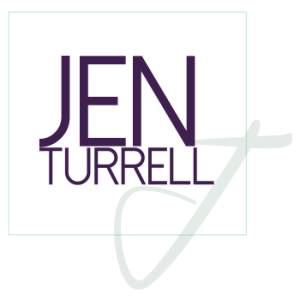Financial Fluency Episode #20: Making Changes in Your Financial System
Today I want to talk about how to make changes in your financial life and your financial systems. The two main levers for making change in a system are changing what goes in and what comes out of that system.
In the case of your finances – especially your personal finances – that is the income that flows in and the expenses that flow out. Part of that is also looking at efficiencies, but I’m going to group that under expenses because those systems are about how to get more out of the money that you are spending right now.
You can listen in here or read below and Tweet it out here
Income
A lot of people in the personal finance world like to look first at the expenses because that seems like an easy thing that we have control over on a daily basis, but I’m going to go for the income first, because let’s be honest, in terms of long term changes, that system can make a greater change than anything else can.
If You’re Employed
If you work in a job for somebody else, the main way to get a change in your income is to ask for a raise. I’m not an expert in negotiating raises, but I know that in Tim Ferriss’s book and Ramit Sethi’s book, ‘I will Teach you to be Rich’, they both talk about some great ways to lead up to asking for that raise. I think they both talk about maybe three or even six months of steps you can take to start setting the stage to establish the value you bring to the company to show and track your progress over time, and to show that you really are bringing a lot more to the company that what you’re paid for right now. It’s then easier to ask for the raise.
Other ways you can interact with your boss ahead of time are to ask for feedback on projects you’re doing, ask for feedback on what you can do to be more valuable, to be more of a long term player and asking for educational opportunities, for the business to send you to trainings in different things to make you more valuable.
Other options for when you work in a job already are asking to take on a new project, to seek more customers for commission, if applicable, to ask to be involved in things that are at a higher level than what you’ve been doing before or just start doing more things. If you see things that need to be done, start doing them, and make sure people notice that you’re doing them.
If you’ve been doing the newsletter or something else on top of your regular job that you aren’t being paid for, make sure everyone knows and recognizes what effect that has on the company. If you’re doing the social media on top of your regular job, make sure you’re tracking all the Google Analytics that show how social media brings more traffic to the website, and how that has increased conversions. Whatever it is, really track it and make sure you can show your bosses just now much you’re doing to bring value to the company.
Another option, even if you have a job, is to start moonlighting or start a side gig to offer your services in some way. Maybe make a list of all the things that you could do for money, go out there and start brainstorming. Ask people if they need your help with different things, and those things can change your income if you are employed in a job.
If You’re Self Employed
If you’re self-employed, there are a number of things you can do as well.
The first and most obvious one is to raise your prices for current services, and let your clients know that prices will be going up in so many months. This obviously depends on whether you are a time based service provider or a product based service provider or a project based service provider.
You could finish up current projects and let people know that prices will be going up on the next round of projects, or let them know that prices will be going up on a certain date or on the products at a certain time, or the next version of the products, or something like that.
You can also create some new offers you’ve never had before.
- What is it your clients have been asking you about?
- What are they interested in? Are there any burning pains they have that you haven’t addressed that you could now?
- You can also bundle together old offers or even old content into a new product or service. I’ve seen a lot of people do this with blog content being bundled into an ebook that’s then sold, so that’s something to think about.
- You can also have a limited time sale on products you already have. You can expand it to a new niche or market. If you are a website designer for tech companies, say, maybe you could start taking on smaller entrepreneurs or small businesses, people who’ve been on Etsy but have got too big and now need a new website. You could talk to people you know, people you like to work with, the kinds of people and kinds of projects you like to do, and see if that can be expanded into a new niche.
- You can also reach out to people in similar niches for joint venture and collaboration type projects to reach clients that you don’t have access to right now, but you could by working with somebody else.
- Another option is to be an affiliate for someone else’s products to your existing audience, so that’s where you find someone who has a product that you already like and use, and find out if they have some kind of affiliate program. You can then offer those products to your audience, and that is helping them reach a new audience, and it helps you by giving you some portion of those sales.
- Or you could create an affiliate program for your own product, offer your own clients the opportunity to be affiliates for you, and they can share your products or services with their audience and network.
Expenses
Let’s switch over to the other lever for change which is the outflow, the expenses.
The first place it’s easiest to start is the low hanging fruit. Look at subscriptions, gym memberships, those sorts of things, how much are you using them and is it really worth what you’re paying per year?
A lot of us think we go to the gym enough, and if you’re taking a class or if your kids have swim lessons or whatever it is and you’re using it every single week, that’s totally legit. You can always try to negotiate for a different price, it’s worth asking, and you never know.
Think about things that are subscriptions where you can potentially pay for single uses instead, like a day pass for your gym if you’re only going now and then and not every single week. If you’re using cable, try downloading individual movies instead, or use one of the streaming services like Netflix or Amazon Prime. This serves the purpose that you’re using it for right now, but it costs less for the amount that you actually use it.
If You Don’t Want To Cut It, Reduce It
You can also negotiate the bills that you don’t want to cut, your cellphone bill, internet or cable, if you have it, and you can sometimes bundle those together and get savings for that, or you can call and ask them if there are any current promotions going on that they can apply to your account. A lot of the time they have promotions for new people who sign up, and if you call and say, I’ve been a customer for five years, I would like to take advantage of this promotion you’re offering to new people as I’m a loyal customer, a lot of times they’ll go ahead and apply it to your account.
Another option is to look at your car insurance, home insurance or rental insurance and if you can bundle those together for savings, and then you can call your credit cards and ask for lower interest rates, ask for promotions, ask if they have anything going, or if there’s any other card that would better suit your need.
Plan, Plan, Plan
Even for things like eating out, your variable spending, you can schedule when you’re going to eat out and you can even pick the restaurants to figure out how much you’re going to spend ahead of time, and then also schedule out those shopping trips. There are a lot of online meal plans with shopping list type services now that you can use, so you can really plan out how much you’re going to spend each week on your variable spending.
As long as you stick to it or close to it, you can really control some of that spending that gets out of control relatively frequently.
There are also some options for things that you use a lot like paper products, paper towels and toilet paper. You can set them on delivery order from Amazon using the Amazon subscription service which is a pretty great thing. We used to use it for things like diapers back in the day, and there was a while where I did put things like toilet paper, paper towels, wipes and diapers on there, because we could kind of predict how frequently we were going to run out, and I always had them arrive a little before we actually needed them, because with diapers you don’t want to run out!
That did save some time and money and trips to the store, and I was able to plan things out a little better when we had that going on. I haven’t done it for a while now because we no longer get diapers (phew!). That was a huge saving, that and having my kids both start full days of school have made such a massive difference in our personal finances.
That’s All, Folks!
So those are a few things that you can look at in terms of changing both the inflow and the outflow for your financial system. Setting up some of these things, especially the ones that you can put on autopay, or the ones that you can reduce the monthly amount, the effect of that really builds up month by month.
If you can save ten dollars per line on three family lines for your cellphone, that’s 30 dollars per month over the course of a year, and that really adds up. If you do that across a number of different categories in your spending, it can come to a significant amount of money that can really change how quickly you can pay off debt or build up savings.
So those are my tips for you for today, I hope that is helpful. If you like this podcast, please subscribe and listen every week, and I would love it if you would leave an awesome iTunes review too. Thank you so much. If you want to reach me, I’m jen@jenturrell.com, you can find me at the website, I read my own emails and answer them as much as I can. Talk to you soon.
Mastering Money Matters
What if managing your money and feeling wealthy was easy?
Imagine going from feeling sick to your stomach every time you have to pay a bill, to having a system that pays all of your bills on time, and shows you at a glance where all of your money is and where it is going.
Mastering Money Matters will show you a new way of looking at your finances so you can set up your systems, enjoy your money, and stop worrying about your next bill.
If you’ve been desperately avoiding looking at your finances and hoping it all just magically works out – money comes in, it doesn’t run out, and you have enough for a bit of extra spending – enroll in Mastering Money Matters today.

 Sandy Chaikin is Co-founder for Chaikin Analytics, a ground-breaking stock research and analysis platform.
Sandy Chaikin is Co-founder for Chaikin Analytics, a ground-breaking stock research and analysis platform. By getting out of debt and paying off those high interest credit cards, paying off the highest interest first and going down the line from there.
By getting out of debt and paying off those high interest credit cards, paying off the highest interest first and going down the line from there.